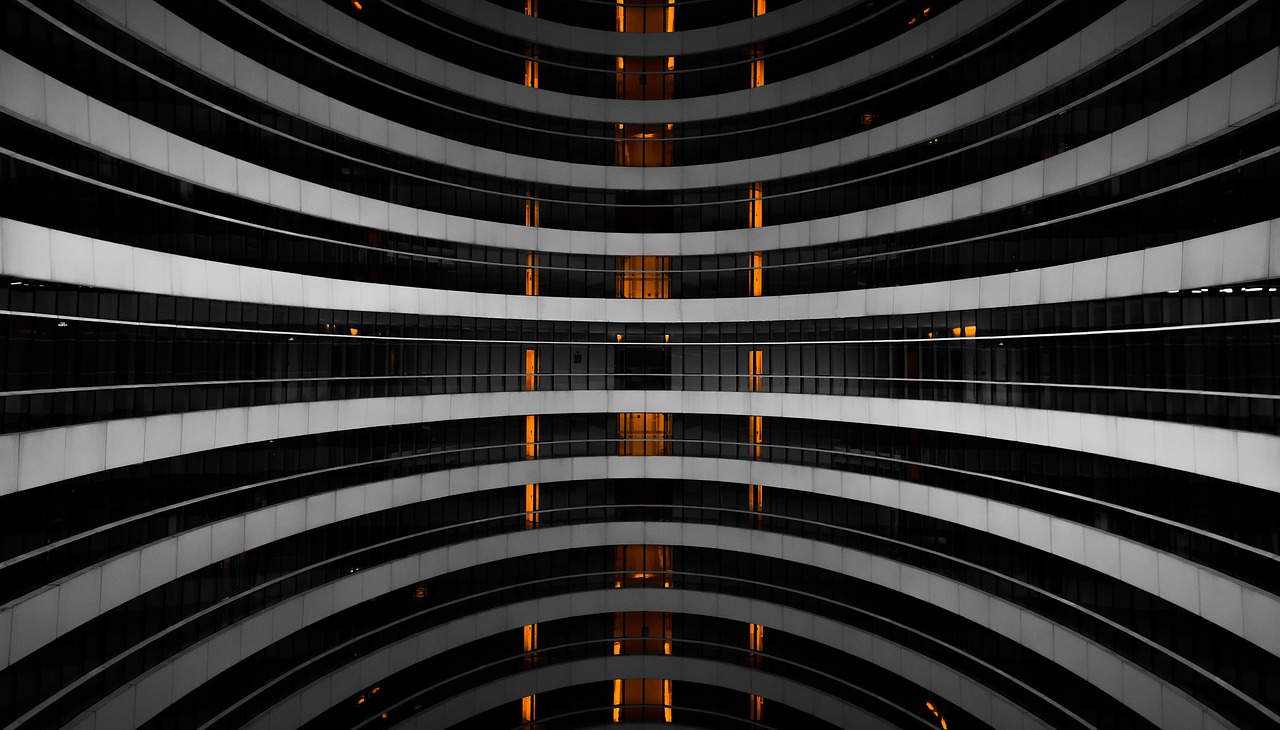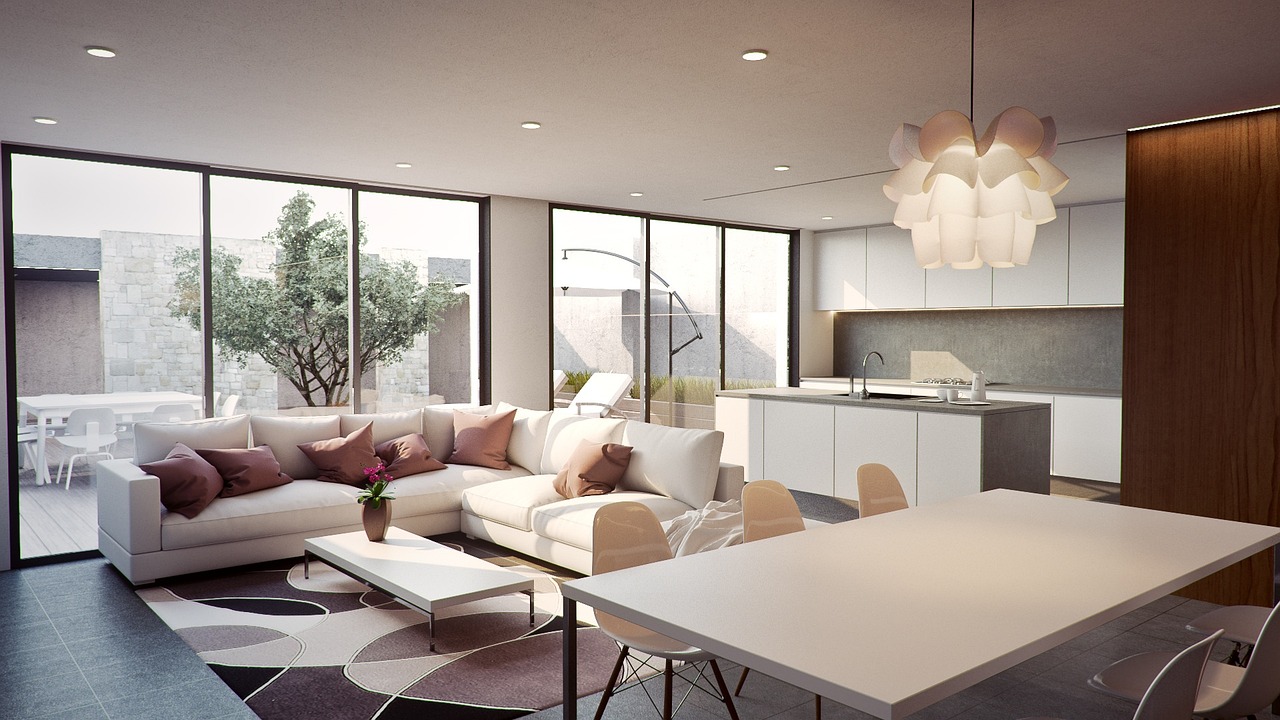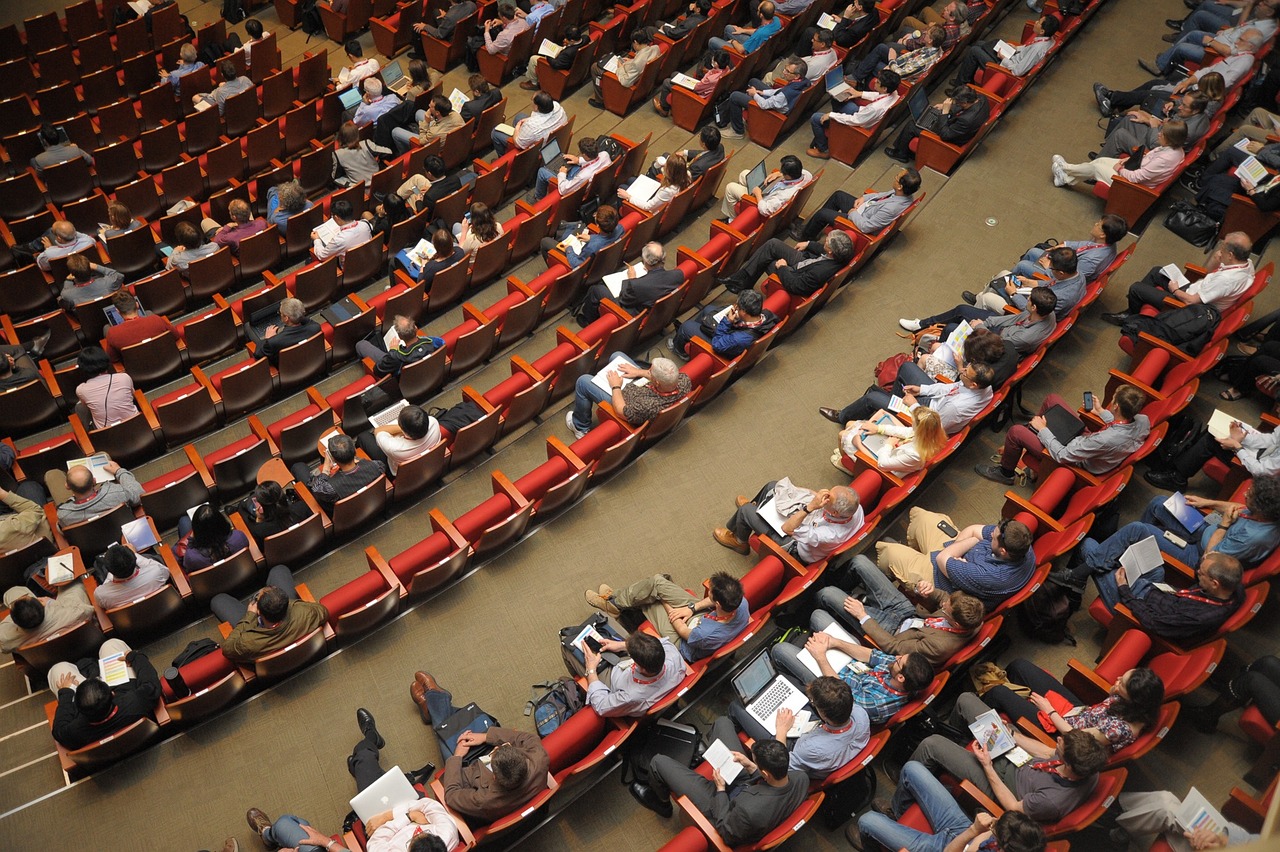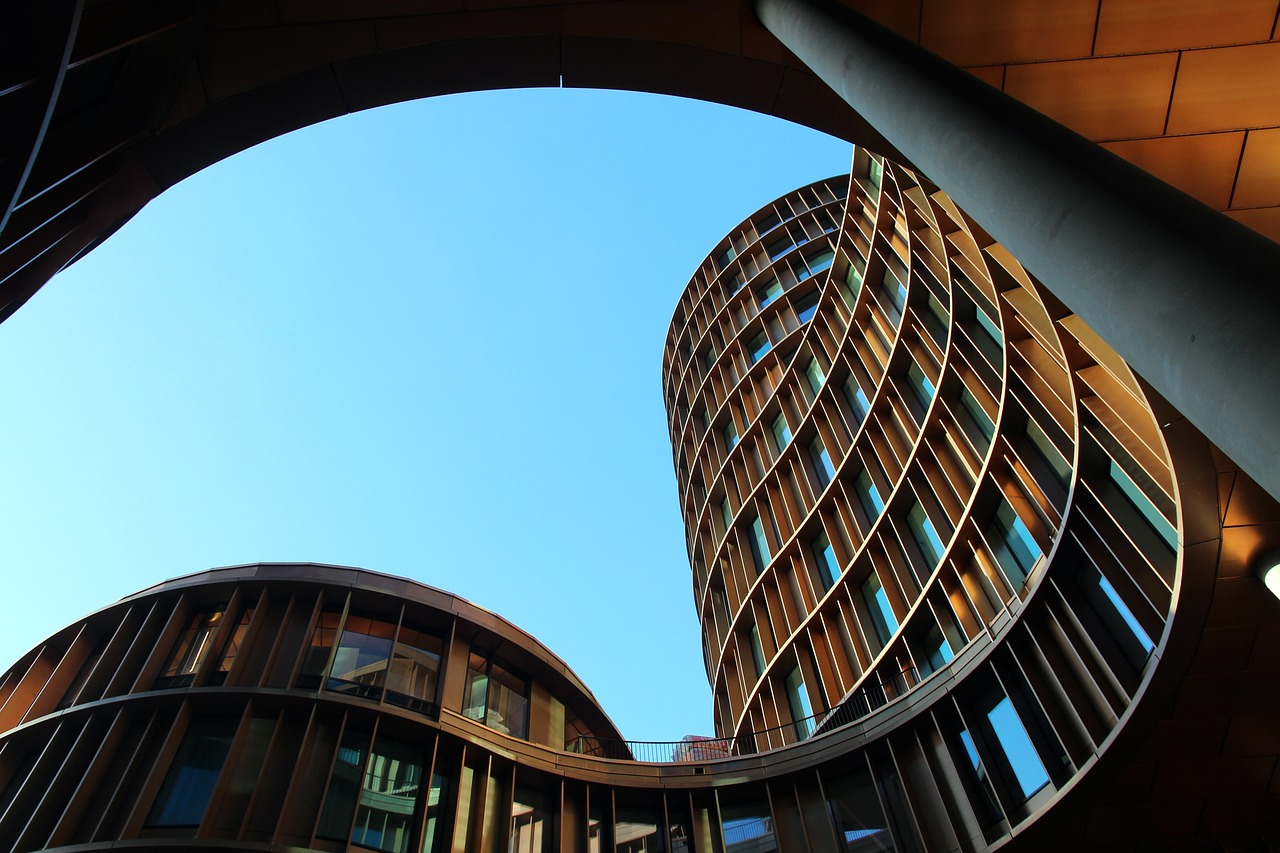The Philosophy of Influencing Behavior with Architecture
Have you ever walked into a space and felt an immediate sense of comfort or unease? It’s fascinating how the design of our surroundings can profoundly influence our emotions and behaviors. The philosophy of architecture extends beyond mere aesthetics; it delves into the intricate relationship between space and human experience. By understanding this connection, architects can create environments that not only look appealing but also foster positive interactions and enhance community bonds.
At its core, architecture is about creating spaces that resonate with people. Think about it: every structure, from a cozy café to a sprawling office complex, has the potential to shape our daily lives. This influence can be intentional or incidental, but it’s always present. For instance, consider how a well-designed park can encourage families to gather and play, while a poorly planned one might deter visitors altogether. The spaces we inhabit can either invite us to connect with others or push us into isolation.
Architecture has the power to evoke feelings of safety, creativity, or inspiration. By incorporating elements like natural light, open layouts, and inviting colors, architects can create a sense of well-being that permeates a space. This is not just about making things look pretty; it’s about understanding how our environments affect our mental state and social interactions. When we walk into a room that feels warm and welcoming, we are more likely to engage with others and participate in activities.
Moreover, the philosophy of influencing behavior through architecture involves considering the cultural context in which a building exists. Different communities have unique needs and values that should be reflected in their architectural designs. For example, a community center in a bustling urban area might prioritize accessibility and multifunctional spaces to cater to diverse groups, while a rural library may focus on creating a quiet, contemplative environment for study and reflection.
Ultimately, the philosophy of architecture is about making thoughtful choices that resonate with the people who inhabit these spaces. It’s about understanding that every design decision—from the materials used to the spatial arrangement—can have a ripple effect on human behavior. As we continue to explore this fascinating intersection of architecture and psychology, we can look forward to creating environments that not only serve functional purposes but also enrich our lives and strengthen our communities.
- How does architecture influence human behavior?
Architecture shapes our experiences by affecting our emotions, interactions, and overall well-being through design elements like space, light, and materials. - What is biophilic design?
Biophilic design focuses on incorporating natural elements into architectural spaces to enhance mental health and foster a connection with nature. - Can architectural design improve productivity?
Yes, thoughtful workplace design can promote collaboration, creativity, and employee satisfaction, ultimately leading to increased productivity. - What role do public spaces play in community engagement?
Public spaces serve as essential venues for social interactions, cultural exchange, and community cohesion, making their design crucial for fostering connections among individuals.

The Role of Space in Human Interaction
Have you ever walked into a room and felt an immediate shift in your mood? Or perhaps you noticed how people tend to cluster in certain areas during a gathering? This is no coincidence. The design of physical spaces plays a crucial role in shaping human interactions and behaviors. Architects and designers are increasingly recognizing that the environments they create can either foster connections or create barriers between individuals. By understanding the dynamics of space, we can craft environments that enhance community engagement and connectivity.
Consider the layout of a public park. If the pathways are winding and indirect, people might feel less inclined to explore and interact with one another. On the other hand, a park designed with open spaces, inviting benches, and clear sightlines encourages people to linger, chat, and enjoy each other's company. This is the essence of spatial design: it has the power to influence how we move through and experience our surroundings.
Moreover, the scale and proportion of a space can significantly impact social interactions. A large, cavernous hall may feel intimidating, leading to isolated groups rather than a united gathering. Conversely, smaller, intimate spaces can promote conversation and connection. For instance, cafes that feature cozy nooks and communal tables tend to create a more inviting atmosphere, encouraging patrons to strike up conversations with strangers. It's fascinating how the mere arrangement of furniture can lead to a sense of community!
Architects often employ various strategies to enhance human interaction through space. Here are a few key considerations:
- Accessibility: Ensuring that spaces are easily navigable encourages more people to engage with them.
- Flexibility: Designing multi-functional areas can adapt to various needs, fostering diverse interactions.
- Visual Connections: Creating sightlines between different areas can promote a sense of openness and encourage socialization.
In essence, the role of space in human interaction is profound. It’s not just about aesthetics; it’s about creating environments that resonate with our innate desire for connection. As we continue to explore the philosophy of architecture, it's vital to recognize that every design choice has the potential to influence behavior, either positively or negatively. The next time you step into a space, take a moment to consider how its design might be shaping your experience and interactions with others.
Q: How does space influence social behavior?
A: The design and layout of a space can encourage or discourage social interactions. Open layouts promote engagement, while closed-off areas may lead to isolation.
Q: What are some key elements of effective spatial design?
A: Effective spatial design includes accessibility, flexibility, and visual connections that foster a sense of community and encourage interaction.
Q: Can architecture impact mental health?
A: Yes, architectural elements such as natural light, color, and spatial arrangement can significantly affect mental well-being and emotional health.

The Psychological Impact of Design
When we step into a space, whether it’s a cozy café, a bustling office, or a serene park, we often don’t realize the profound effect that architecture has on our mood and behavior. The psychological impact of design is a fascinating field that delves into how various architectural elements influence our emotions, thoughts, and actions. Imagine walking into a room painted in soft blues and greens; you might feel calm and relaxed. Now picture a stark, white office with fluorescent lights—doesn’t it feel a bit sterile and uninspiring? This is the power of design!
One of the key aspects of how we perceive a space is through its color palette. Colors can evoke a wide range of feelings. For instance:
- Warm colors like red and orange can stimulate energy and excitement.
- Cool colors such as blue and green tend to promote tranquility and peace.
- Neutral tones offer a sense of balance and can be very grounding.
Additionally, the use of light plays a critical role in shaping our experiences. Natural light, for example, is known to enhance mood and boost productivity, while dim lighting may create a cozy atmosphere but can also lead to feelings of lethargy. Architects often use large windows and skylights to maximize natural light, creating a more inviting environment.
Another significant factor is the layout of a space. Open floor plans can encourage collaboration and communication, while closed-off areas might foster privacy and focus. Think about how you feel in a crowded, chaotic environment versus a well-organized, spacious one. The arrangement of furniture, pathways, and even the height of ceilings can dramatically influence how we interact with each other and the space around us.
At the heart of this discussion lies environmental psychology, which examines the intricate relationship between people and their surroundings. Understanding this connection is crucial for architects and designers as they strive to create spaces that not only meet functional needs but also enhance well-being. Research in this field has shown that well-designed environments can lead to increased productivity, reduced stress, and improved overall satisfaction.
For instance, studies have found that workplaces incorporating elements of nature—like plants or views of the outdoors—can significantly boost employee morale and creativity. This leads us to the concept of biophilic design, which seeks to connect people with nature through architectural choices. By incorporating natural light, greenery, and organic shapes, architects can create spaces that are not only aesthetically pleasing but also psychologically beneficial.
Biophilic design principles are grounded in the idea that humans have an innate connection to nature, and integrating natural elements into our built environments can enhance our mental health and emotional well-being. This approach can include:
- Incorporating living walls or vertical gardens.
- Using natural materials like wood and stone.
- Designing spaces that provide views of nature.
These principles not only beautify a space but also create a sense of calm and connection, reminding us of the natural world we often leave behind in our urban lives.
Ultimately, the psychological impact of design is a powerful tool that architects and planners can wield to shape our experiences. By thoughtfully considering color, light, layout, and the incorporation of nature, they can create spaces that foster positive emotions, enhance productivity, and promote social interactions. So, the next time you find yourself in a beautifully designed space, take a moment to appreciate how it influences your mood and behavior—it’s more than just aesthetics; it’s a carefully crafted experience!
- What is the role of color in architectural design? Color plays a significant role in influencing emotions and behaviors, with different hues evoking different feelings.
- How does natural light affect mood? Natural light has been shown to improve mood and productivity, making spaces feel more inviting and energizing.
- What is biophilic design? Biophilic design is an approach that incorporates natural elements into architecture to enhance well-being and foster a connection to nature.

Environmental psychology is a fascinating field that dives deep into the intricate relationship between people and their surroundings. It’s like a lens through which we can understand how our environments—be they urban landscapes, natural settings, or even our homes—affect our thoughts, feelings, and behaviors. Imagine walking into a room painted in soft blues and greens; you might instantly feel a sense of calm wash over you. On the other hand, a stark, sterile white environment could evoke feelings of discomfort or anxiety. This is the power of design, and it’s where environmental psychology plays a crucial role.
At its core, environmental psychology seeks to answer some compelling questions: How does our environment shape our emotional states? What architectural features can enhance our productivity? How can thoughtful design promote well-being? These inquiries are vital for architects and designers who aim to create spaces that not only look good but also feel good. For instance, research shows that natural light can significantly improve mood and increase focus. This is why many modern offices now incorporate large windows and open spaces that invite sunlight in.
To illustrate, consider the following aspects of environmental psychology that are particularly influential in architectural design:
- Color: Different colors can evoke different emotions. Warm colors like red and orange can stimulate energy, while cooler tones can promote relaxation.
- Natural Elements: Incorporating plants and natural materials can enhance feelings of well-being and reduce stress.
- Spatial Layout: An open layout can encourage interaction, while closed spaces might promote privacy but hinder collaboration.
Moreover, environmental psychology also emphasizes the importance of personal space. Have you ever noticed how crowded spaces can make you feel anxious or uncomfortable? This phenomenon is well-documented, and architects are increasingly aware of it. They strive to create environments that balance communal areas with private spaces, allowing individuals to choose their level of interaction with others. This thoughtful approach not only enhances individual comfort but also fosters a sense of community.
In conclusion, understanding environmental psychology is essential for architects who wish to create spaces that genuinely resonate with people. By considering how various design elements impact human behavior, architects can craft environments that not only meet functional needs but also nurture emotional well-being and foster social connections. The implications of this understanding are profound, as it can lead to healthier, more productive, and more engaged communities.

In an age where technology often overshadows our connection to nature, biophilic design emerges as a beacon of hope, reminding us of the profound relationship between humans and their environment. This design philosophy seeks to integrate natural elements into architectural spaces, creating environments that not only nurture our physical well-being but also enhance our emotional and psychological health. Imagine walking into a building where sunlight filters through large windows, illuminating a space adorned with living plants. This is the essence of biophilic design—inviting nature inside to create a sanctuary that fosters serenity and inspiration.
At its core, biophilic design is based on the understanding that humans have an innate affinity for nature, a concept often referred to as biophilia. This principle suggests that our well-being is deeply intertwined with our surroundings. By incorporating elements such as natural light, water features, and plant life, architects can create spaces that evoke feelings of tranquility and connection. For instance, studies have shown that workplaces designed with biophilic principles not only improve employee satisfaction but also boost productivity and creativity. Who wouldn’t want to work in an environment that feels more like a garden than a cubicle?
One of the key aspects of biophilic design is the use of natural materials. Think about the warmth of wood, the coolness of stone, or the texture of clay. These materials not only add aesthetic value but also create a sensory experience that resonates with our innate preferences. Furthermore, incorporating views of nature—whether it’s a garden, a forest, or even a simple tree—can significantly reduce stress levels and enhance mood. It’s like taking a mental vacation every time you glance outside!
To illustrate the principles of biophilic design, consider the following table that outlines its core components and their benefits:
| Biophilic Element | Benefits |
|---|---|
| Natural Light | Enhances mood, regulates circadian rhythms, and reduces energy costs. |
| Indoor Plants | Improves air quality, reduces stress, and boosts creativity. |
| Water Features | Creates a calming atmosphere and promotes relaxation. |
| Natural Materials | Provides sensory richness and connects occupants to nature. |
| Views of Nature | Reduces anxiety, enhances focus, and promotes well-being. |
Incorporating these elements into architectural design isn’t merely about aesthetics; it’s about creating spaces that resonate with our biological needs. Imagine a healthcare facility that features gardens and natural light—patients healing in such environments often report faster recovery times and improved emotional health. It’s a powerful reminder that the spaces we inhabit can profoundly affect our lives.
Ultimately, biophilic design is more than a trend; it’s a philosophy that acknowledges our deep-rooted connection to the natural world. As architects and designers embrace these principles, we can look forward to a future where our built environments not only shelter us but also enrich our lives by fostering a sense of belonging and well-being. So, the next time you step into a beautifully designed space filled with natural elements, take a moment to appreciate the thoughtfulness behind it—after all, it’s not just a building; it’s a bridge to nature.
- What is biophilic design? Biophilic design is an architectural approach that integrates natural elements into built environments to enhance human well-being and connection to nature.
- How does biophilic design impact mental health? By incorporating natural light, greenery, and natural materials, biophilic design can reduce stress, improve mood, and promote overall mental well-being.
- Can biophilic design be applied in urban settings? Absolutely! Urban environments can benefit greatly from biophilic design through the integration of parks, green roofs, and indoor plants.
- Why is natural light important in biophilic design? Natural light helps regulate our circadian rhythms, boosts vitamin D levels, and creates a more inviting and uplifting atmosphere.

When we talk about spatial configuration, we’re diving deep into the very essence of how spaces are arranged and how they influence our movement and interactions within them. Imagine walking into a room; the way it's set up can either invite you in or push you away. This is the magic of architectural design—it's not just about aesthetics but about creating an environment that feels right, that flows seamlessly. Think of it like a well-choreographed dance, where every step and movement is intentional, guiding you through a narrative that unfolds as you navigate the space.
The layout of any given space can significantly affect how we connect with others. For example, open floor plans in offices are designed to encourage collaboration and communication. When you can see your colleagues and easily approach them, it fosters a sense of community and teamwork. On the flip side, if spaces are too compartmentalized, they can create barriers, both physically and socially. This leads to isolation rather than interaction, which is the opposite of what many modern designs aim for.
Moreover, the flow of a space is crucial for enhancing user experience. A well-thought-out configuration can lead to a natural progression from one area to another, making it intuitive for people to navigate. For instance, consider how a coffee shop might be organized. The counter should be easily accessible, followed by seating areas that encourage both solo and group interactions. This arrangement not only enhances customer satisfaction but also promotes a lively atmosphere where conversations can thrive.
To illustrate this point further, let’s take a look at some key elements that contribute to effective spatial configuration:
- Pathways: Clear pathways guide movement and reduce confusion, ensuring that people can flow through a space without obstruction.
- Zones: Creating distinct zones for different activities (e.g., relaxation, work, socializing) helps users understand the purpose of each area.
- Visual Connections: Allowing sightlines between spaces can encourage interaction; for example, a view of a play area from a café can lead parents to engage more with their children.
In essence, the spatial configuration and flow of a design are like the threads of a tapestry, weaving together various elements to create a cohesive whole that enhances human experience. Architects and designers must consider how each element interacts with others, creating a symphony of movement that resonates with the users. The goal is to create spaces that don’t just serve a function but also enrich lives, fostering connections and experiences that are memorable and meaningful.
As we look to the future, understanding the importance of spatial configuration will become even more critical. With the rise of remote work and changing social dynamics, architects will need to innovate in ways that keep people engaged and connected, even in the most unexpected of spaces. The beauty of architecture lies in its ability to adapt and evolve, just like the people who inhabit those spaces.
- What is spatial configuration? Spatial configuration refers to the arrangement of spaces and elements within an environment, influencing how people move and interact.
- How does spatial design affect behavior? Effective spatial design can encourage social interactions, enhance productivity, and create a more enjoyable experience for users.
- Can architecture influence mental health? Yes, well-designed spaces can promote well-being by reducing stress and fostering a sense of community.

When we think about architectural design, we often picture beautiful buildings or stunning interiors. However, the true power of architecture lies in its ability to influence human behavior. Behavioral design strategies focus on creating environments that not only look good but also encourage specific actions and interactions among people. Imagine walking into a workspace that feels inviting and energizing; it’s not just the aesthetics but the intention behind the design that motivates you to collaborate and innovate.
One effective way to achieve this is through the use of spatial organization. By strategically placing communal areas, such as lounges or coffee stations, architects can create natural meeting points that foster spontaneous conversations and collaboration. Think about it: when you’re grabbing a cup of coffee, you’re more likely to run into a colleague and brainstorm ideas. This simple design choice can significantly enhance teamwork and creativity.
Furthermore, the incorporation of flexible spaces is pivotal in modern architecture. These spaces can be adapted for various purposes, allowing for both individual work and group activities. For instance, a conference room that can be rearranged for different types of meetings encourages diverse interactions and enhances productivity. It’s like having a Swiss Army knife at your disposal; it’s versatile and ready to meet your needs at any moment.
Another critical aspect of behavioral design is the use of natural light and color psychology. Studies have shown that natural light can boost mood and energy levels, while certain colors can evoke specific feelings. For example, blue tones are often associated with calmness and focus, making them ideal for areas meant for concentration. On the other hand, warmer colors like yellow can stimulate creativity and energy. By carefully selecting colors and maximizing natural light, architects can create environments that not only look appealing but also positively influence the mental state of their occupants.
Moreover, the concept of nudging—a behavioral economics term—plays a significant role in architectural design. Nudges are subtle prompts that guide people towards desired behaviors without restricting their freedom of choice. For example, placing stairs in a prominent location encourages individuals to use them instead of the elevator, promoting physical activity. This design strategy can be likened to placing a delicious dessert in plain sight; it’s hard to resist the temptation!
In conclusion, behavioral design strategies are about much more than aesthetics; they’re about crafting experiences and environments that enhance human interactions and behaviors. By considering spatial organization, flexibility, natural elements, and subtle nudges, architects can create spaces that not only meet functional needs but also inspire and motivate individuals. As we continue to explore the intersection of architecture and behavior, it becomes clear that the built environment can profoundly shape our lives in ways we might not even realize.
- What are behavioral design strategies? Behavioral design strategies are intentional architectural choices aimed at influencing how people interact with spaces and each other, fostering desired behaviors.
- How does natural light impact behavior in architectural design? Natural light can enhance mood and productivity, making spaces feel more inviting and energizing.
- Can architecture really change human behavior? Yes! Thoughtful architectural design can encourage specific actions, improve interactions, and enhance overall well-being.
- What role does color play in behavioral design? Different colors can evoke various emotions and responses, influencing how individuals feel and behave in a space.

When we talk about the influence of architecture on behavior, real-world examples provide the most compelling insights. Let's dive into some case studies that showcase how thoughtful design can shape interactions, foster community, and enhance overall experiences. Each of these examples illustrates the profound impact that architectural decisions can have on individuals and groups alike.
One striking example is the High Line in New York City. Originally an abandoned railway line, the High Line has been transformed into a vibrant public park that encourages social interaction. The design features winding pathways, lush greenery, and seating areas that invite people to linger and connect. It has become a hotspot for both locals and tourists, demonstrating how repurposed spaces can invigorate community engagement. This case highlights the importance of accessibility and natural elements in urban design.
Another fascinating case is the Vitra Campus in Germany, which showcases a collection of buildings designed by various renowned architects, including Frank Gehry and Zaha Hadid. This site serves not only as a functional workspace but also as a cultural hub that attracts visitors from around the world. The architectural diversity encourages exploration and interaction among visitors, promoting a sense of community. The design principles here illustrate how a variety of styles can coexist and create a dynamic environment conducive to creativity and collaboration.
In the realm of workplace design, the Googleplex in Mountain View, California, stands out as a prime example of how architecture can enhance productivity and employee satisfaction. The open-plan offices, recreational areas, and numerous amenities create an atmosphere that encourages collaboration and innovation. By incorporating elements like natural light, flexible workspaces, and green spaces, Google has cultivated a workplace that not only boosts morale but also enhances overall productivity.
To further illustrate the impact of architectural influence, let’s consider a few key aspects that emerge from these case studies:
| Case Study | Location | Key Features | Influence on Behavior |
|---|---|---|---|
| High Line | New York City | Public park, greenery, seating areas | Encourages social interaction and community engagement |
| Vitra Campus | Germany | Diverse architectural styles, cultural hub | Promotes exploration and collaboration |
| Googleplex | California | Open-plan offices, recreational areas | Enhances productivity and employee satisfaction |
These case studies exemplify how architecture can be a powerful tool for influencing behavior. By creating spaces that prioritize human connection, creativity, and well-being, architects can design environments that not only serve functional purposes but also enrich the lives of those who inhabit them. The thoughtful integration of elements like nature, accessibility, and diversity in design can transform ordinary spaces into extraordinary experiences.
As we look to the future, it's essential to consider how these principles can be applied to new projects. Architects and urban planners must remain attuned to the needs of communities and the evolving dynamics of human interaction. By learning from successful case studies, we can continue to shape environments that foster connection and enhance our collective experience.
- How does architecture influence human behavior? Architecture influences behavior by shaping the physical environment, which affects how people interact, feel, and engage with each other.
- What are some key elements that impact architectural design? Key elements include space configuration, natural light, color, and the integration of nature, all of which can evoke specific emotions and behaviors.
- Can architecture promote community engagement? Yes, well-designed public spaces can encourage social interaction and foster a sense of community among individuals.
- What is biophilic design? Biophilic design incorporates natural elements into architectural spaces to promote mental health and emotional well-being.

Public spaces are the heartbeat of any community, acting as vital hubs where individuals from diverse backgrounds come together. These spaces, whether they are parks, plazas, or community centers, play an essential role in fostering social interactions and enhancing community engagement. Imagine a vibrant park filled with laughter, the sound of children playing, and adults engaging in conversation; this is the essence of a well-designed public space. Architectural design in these areas can significantly influence how people interact, encouraging them to mingle, collaborate, and build relationships.
One of the key aspects of effective public space design is the incorporation of elements that promote accessibility and inclusivity. When designing these areas, architects must consider the needs of all community members, including those with disabilities, the elderly, and families with children. This can be achieved by integrating features such as:
- Wide pathways: Allowing for easy navigation and movement.
- Seating areas: Providing comfortable spots for relaxation and conversation.
- Interactive installations: Encouraging engagement and participation.
Moreover, the aesthetic appeal of public spaces cannot be overlooked. The use of vibrant colors, interesting textures, and natural elements can create an inviting atmosphere that draws people in. For instance, incorporating greenery not only beautifies the environment but also has been shown to reduce stress and promote well-being. This concept, known as biophilic design, emphasizes the importance of connecting people with nature, which can lead to increased social interactions and a stronger sense of community.
Furthermore, the strategic placement of amenities such as food trucks, art installations, and performance areas can transform a simple park into a lively gathering spot. These features not only attract visitors but also encourage spontaneous interactions among community members. For example, hosting events like farmers' markets or outdoor concerts can foster a sense of belonging and pride within the community, making public spaces a cornerstone of social life.
In addition to physical design elements, the programming of public spaces plays a crucial role in community engagement. Regular events, workshops, and cultural activities can encourage participation and interaction among residents. When people feel a sense of ownership and involvement in their public spaces, they are more likely to engage with their neighbors and contribute to the community's well-being. This sense of community can be further enhanced by creating opportunities for local artists and performers to showcase their talents, making public spaces vibrant and dynamic.
Ultimately, the design of public spaces is not just about aesthetics; it’s about creating environments that nurture relationships and foster community ties. By investing in thoughtful architectural practices that prioritize accessibility, inclusivity, and engagement, we can transform public spaces into thriving centers of social interaction. In doing so, we not only enhance the quality of life for individuals but also build stronger, more connected communities.
Q1: What are the key elements of a successful public space?
A successful public space integrates accessibility, aesthetic appeal, and engaging programming. Features such as seating, greenery, and interactive installations, along with community events, create an inviting atmosphere that encourages social interaction.
Q2: How does biophilic design impact community engagement?
Biophilic design connects people with nature, promoting mental well-being and reducing stress. This connection can lead to increased social interactions as individuals feel more relaxed and inclined to engage with others in natural settings.
Q3: Why is community involvement important in public space design?
Community involvement ensures that public spaces meet the needs and desires of local residents. When people feel a sense of ownership over their environment, they are more likely to engage with it and contribute positively to the community.

When we think about our workplaces, we often envision dull cubicles and long hours spent in front of a computer screen. But what if I told you that the design of our work environment can significantly impact our productivity and overall satisfaction? It's true! The way a workplace is structured—its layout, lighting, and even the colors on the walls—can either inspire creativity and collaboration or stifle it. Just like a well-tuned orchestra, every element in a workplace plays a crucial role in creating a harmonious and productive atmosphere.
One of the most compelling aspects of workplace design is the concept of open spaces. These environments encourage communication and teamwork among employees. Imagine walking into an office where walls are replaced with glass partitions, allowing for a free flow of ideas and conversations. This design promotes a sense of community and makes it easier for colleagues to collaborate on projects. However, it’s essential to balance openness with areas for privacy. After all, sometimes you need to put on your headphones and focus on a task without distractions!
Moreover, the choice of colors and lighting can play a pivotal role in enhancing productivity. Bright, vibrant colors like yellow and green can invigorate and energize a space, while calming blues and greens can promote focus and tranquility. Similarly, natural light is a game-changer. Studies have shown that employees who work in environments with ample natural light report higher levels of satisfaction and productivity. So, it’s no wonder that many modern offices are designed with large windows and open layouts that let the sunshine in.
Another critical aspect of workplace design is the incorporation of flexible workspaces. These areas allow employees to choose where and how they work best, whether it’s at a communal table, a cozy nook, or a private office. Flexibility in the workplace can lead to increased job satisfaction and motivation. When individuals have the freedom to tailor their work environment to their preferences, they often feel more empowered and engaged in their tasks.
To illustrate the impact of workplace design on productivity, consider the following table that outlines key design elements and their effects:
| Design Element | Impact on Productivity |
|---|---|
| Open Layouts | Encourages collaboration and communication |
| Natural Light | Boosts mood and reduces eye strain |
| Color Schemes | Influences energy levels and focus |
| Flexible Workspaces | Increases job satisfaction and creativity |
Lastly, let’s not forget about the importance of wellness areas in the workplace. Incorporating spaces for relaxation, such as lounges or meditation rooms, can provide employees with a much-needed break from their tasks. These areas not only help reduce stress but also foster a sense of community as employees gather to recharge. Just think about it: a quick five-minute break in a peaceful environment can do wonders for your focus and creativity when you return to your work!
In conclusion, the design of a workplace is more than just aesthetics; it's a vital component that can either enhance or hinder productivity. By considering factors like layout, lighting, color, and flexibility, organizations can create environments that not only boost productivity but also foster a happy and engaged workforce. So, the next time you step into your office, take a moment to appreciate how the space around you influences your workday. It might just inspire you to suggest some changes that could benefit everyone!
- What is the most important factor in workplace design? While several factors contribute to effective workplace design, natural light and flexible workspaces are often considered among the most impactful.
- How can I improve my workspace at home? Consider incorporating elements like plants, good lighting, and a comfortable chair to create a more productive environment.
- Does workplace design really affect productivity? Yes! Numerous studies have shown that well-designed workspaces can lead to increased employee satisfaction and productivity.

As we step into a future defined by rapid technological advancements and shifting societal values, the philosophy of architecture is undergoing a transformation. Architects and designers are increasingly tasked with creating spaces that not only serve functional purposes but also resonate with the emotional and psychological needs of individuals and communities. This evolution is driven by several key trends that are reshaping the way we think about space and its impact on behavior.
One of the most significant directions in architectural philosophy is the integration of sustainability. As climate change continues to pose a critical threat to our planet, architects are rethinking traditional building practices. The goal is to create structures that not only minimize environmental impact but also promote a sustainable lifestyle among occupants. This includes the use of renewable materials, energy-efficient systems, and designs that encourage a harmonious relationship between the built environment and nature.
Moreover, the concept of smart architecture is gaining traction. With the advent of the Internet of Things (IoT), buildings are becoming increasingly interconnected. Imagine a workspace where the lighting adjusts automatically based on the time of day or a home that learns your preferences and optimizes energy usage accordingly. This level of interactivity not only enhances comfort but also encourages behaviors that align with energy conservation and efficiency.
Another emerging trend is the emphasis on community-centric design. Architects are recognizing the importance of creating spaces that foster social interaction and inclusivity. This shift is particularly evident in urban planning, where public spaces are being designed to accommodate diverse activities, from community gatherings to recreational events. The goal is to create a sense of belonging and community ownership, which can significantly enhance social cohesion.
In addition to these trends, the philosophy of wellness architecture is gaining momentum. This approach prioritizes the physical and mental well-being of occupants. By incorporating elements such as natural light, ventilation, and biophilic designs—features that connect people with nature—architects are creating environments that support health and productivity. Research has shown that spaces designed with wellness in mind can lead to improved mood, reduced stress levels, and increased overall satisfaction.
As we look ahead, it's clear that the future of architectural philosophy will continue to evolve, shaped by technological innovations and a deeper understanding of human behavior. Architects will need to embrace a holistic approach that considers not just the physical structure but also the emotional and psychological experiences of those who inhabit these spaces. This will require a collaborative effort between architects, urban planners, psychologists, and community members to ensure that the built environment truly reflects the needs and aspirations of society.
In conclusion, the future of architecture is not just about buildings; it's about creating environments that enhance human experience. By focusing on sustainability, smart technology, community engagement, and wellness, architects can design spaces that not only look good but also feel good. As we navigate this exciting frontier, one thing is certain: the philosophy of architecture will continue to play a vital role in shaping our lives and communities.
- What is the importance of sustainability in architecture?
Sustainability in architecture is crucial as it addresses climate change and promotes the responsible use of resources, ensuring that buildings have a minimal environmental impact. - How does smart architecture enhance living spaces?
Smart architecture utilizes technology to create interconnected environments that adapt to user preferences, enhancing comfort and efficiency. - What is wellness architecture?
Wellness architecture focuses on designing spaces that promote the health and well-being of occupants through natural light, ventilation, and biophilic elements. - How can community-centric design impact social interactions?
Community-centric design fosters inclusivity and engagement by creating public spaces that encourage social interaction and a sense of belonging.
Frequently Asked Questions
- How does architecture influence human behavior?
Architecture shapes our experiences and interactions by creating environments that can either encourage or discourage social engagement. Thoughtfully designed spaces can foster community, enhance collaboration, and even impact our emotional well-being. Just like a well-placed bench in a park invites people to sit and chat, the arrangement of buildings can dictate how we interact with one another.
- What is environmental psychology in architecture?
Environmental psychology studies the interplay between people and their surroundings. In architecture, this means understanding how different design elements—like light, color, and layout—affect our moods and behaviors. For instance, a bright, open office can boost creativity, while a dimly lit room might promote relaxation. It’s all about how space can enhance or hinder our daily lives.
- What are biophilic design principles?
Biophilic design focuses on incorporating natural elements into architectural spaces to improve mental health and emotional well-being. This could mean adding plants, natural light, or water features to a building. The idea is simple: when we connect with nature, we feel better. Just think of how refreshing a walk in the park can be—biophilic design aims to bring that feeling indoors.
- How can spatial configuration affect social interactions?
The way spaces are arranged can significantly influence how people move and interact. For example, an open floor plan in an office encourages collaboration, while closed-off cubicles can create barriers to communication. By thoughtfully designing the flow of spaces, architects can enhance social dynamics and make it easier for people to connect.
- What are some examples of architecture that promotes community engagement?
Public parks, community centers, and plazas are great examples of architectural designs that foster community interaction. Successful designs often include amenities like seating, open spaces for events, and areas for social activities. These spaces serve as gathering points, encouraging people to come together and build connections, much like a town square in a bustling community.
- How does workplace design impact productivity?
Workplace design plays a crucial role in employee satisfaction and productivity. Open spaces that encourage teamwork, quiet areas for focused work, and comfortable break rooms can all contribute to a more productive environment. Think of it this way: a well-designed office is like a well-tuned instrument, where every part works together to create harmony and efficiency.
- What future trends are emerging in architectural philosophy?
As society evolves, so do the philosophies behind architecture. Emerging trends include sustainable design practices, smart technology integration, and a greater focus on mental health and well-being. Architects are increasingly considering how their designs can adapt to changing needs and contribute positively to the environment and community, much like a living organism that evolves over time.



















